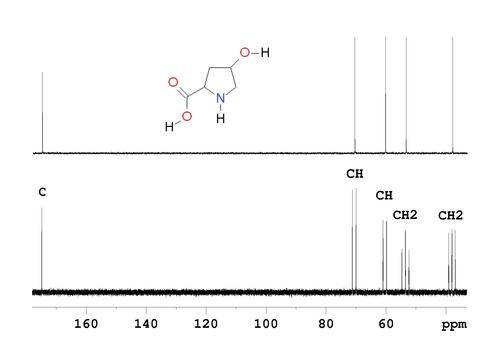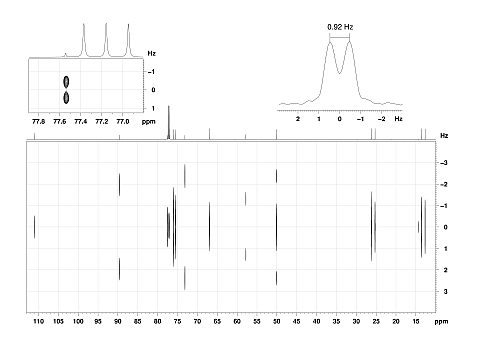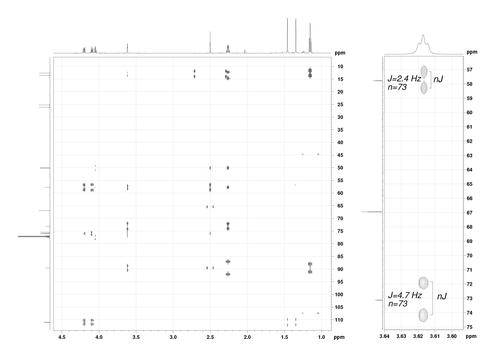(1) C13GD - This is a simple experiment that allows to measure proton-coupled 13C spectra. Similar to DEPT experiments, it can be used for distinguishing carbons of CH3, CH2, CH and C based on the multiplicity of signals, as one-bond 13C-1H coupling constants (1JCH-couplings; ~120-250 Hz) are significantly larger than those over 2-4 bonds (2-4JCH-couplings, typically < 10 Hz). For example, compare spectra of 4-hydroxy-L-proline:

Click here for the high-resolution version of the above spectrum.
A more important advantage of this experiment is that vicinal 3JCH-couplings can be measured, which show Karplus-type dependence on the dihedral angle formed by coupled nuclei (e.g., 13C-C-C-1H). Values of direct 1JCH-couplings can also be used for structure determinations, e.g., depending on the proximity of a C-H bond to a carbonyl group or a lone pair of N or O atoms, the 1JCH-coupling can vary by 5-10 Hz.
Very often, the appearance of multiplets in 1H-coupled 13C spectra does not allow easy assignment of long-range 2-4JCH-couplings due to relatively large number of 1H nuclei coupled to 13C. In such cases, 2D spectra SELJRES and HMBC-JC can be acquired.
(2) SELJRES - selective J-resolved spectra allow easy measurements of all long-range JCH-couplings for a given proton. The main advantage of this experiment is that very small couplings of the order of ~0.9 Hz can be measured.

Further advantages and limitations of this experiment are discussed in Magn. Reson. Chem. 2003 41 431.
(3) HMBC-JC - This experiment provides 2D spectra in which splittings of the cross peaks with separations equal to nJCH appear along the F1 dimension. Depending on spectral parameters used, the scaling factor n usually varies between 50 and 300 (listed as SCALEF in acquisition parameters). Typically, HMBC-JC is suitable for measuring JCH-couplings larger than ~1.5 Hz.

Click here for the high-resolution version of the above spectrum.
Further details and examples of applications can be found in Magn Reson Chem 2001 39 49.
 Close
Close

